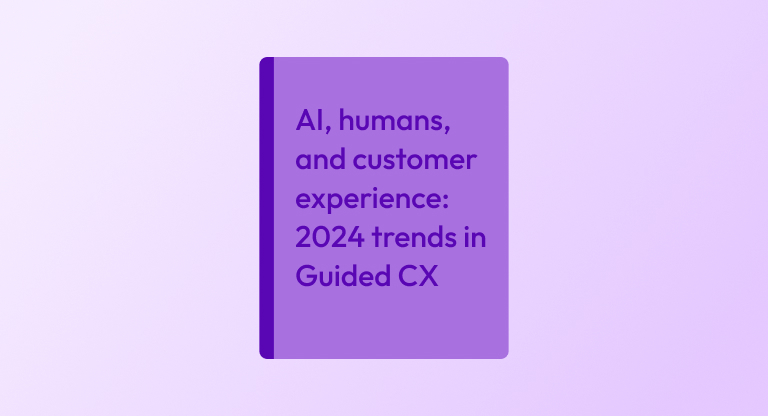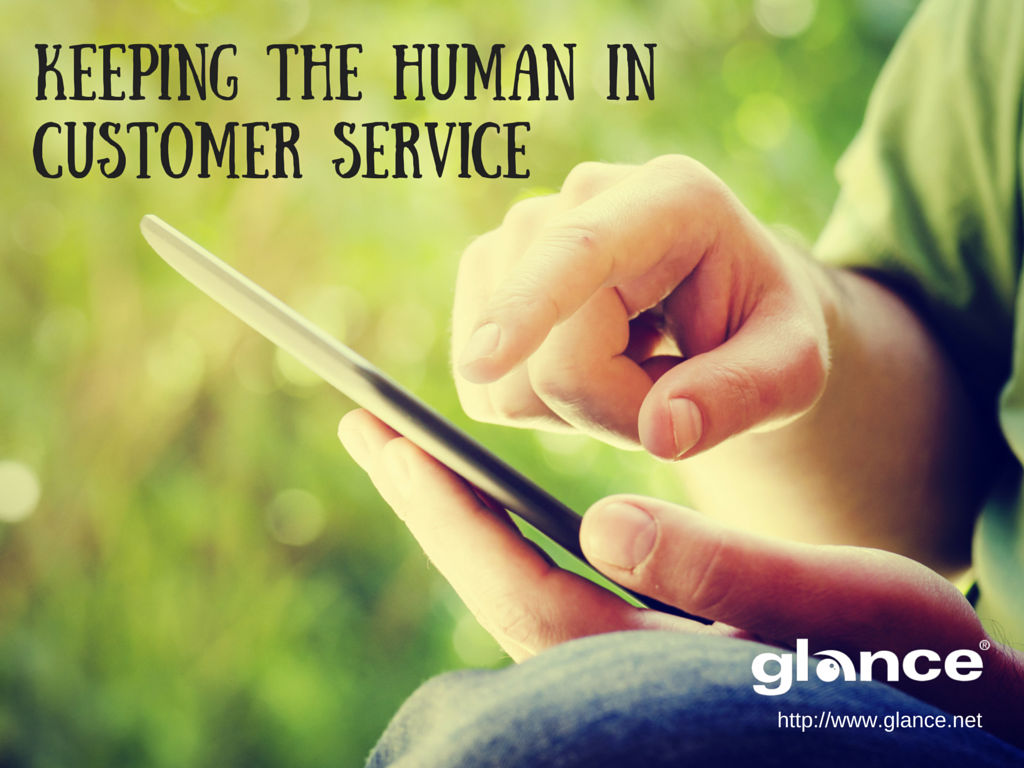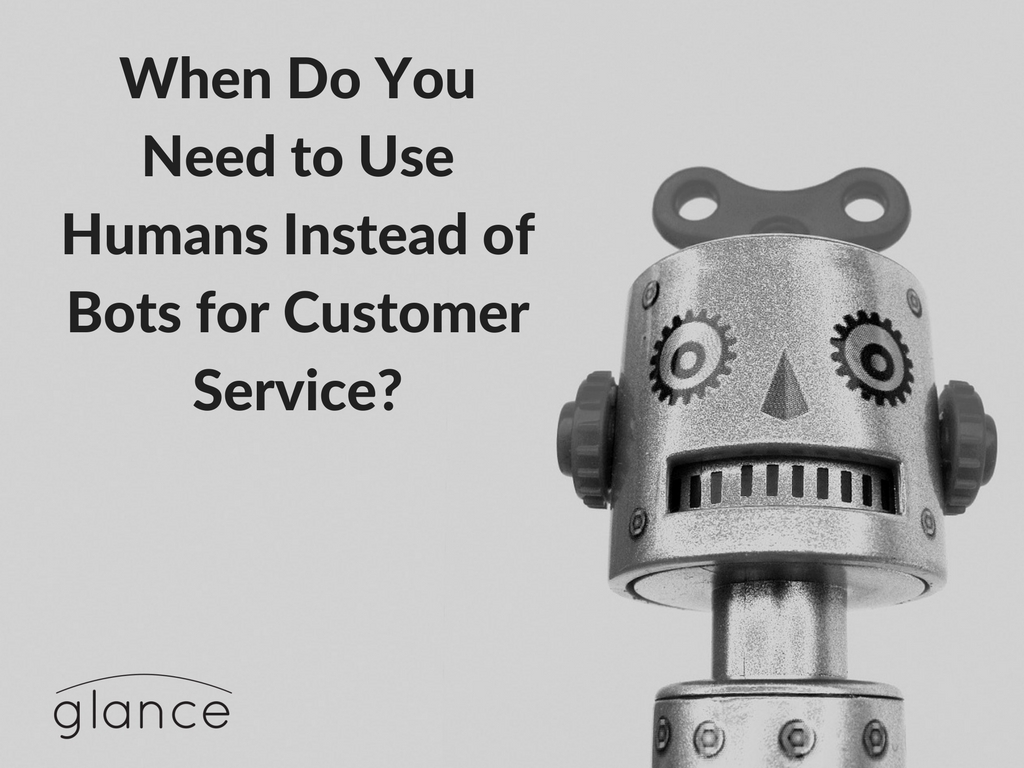The modern mobile app experience is a capital ‘D’ digital experience. As app users, we want experiences that are slick, frictionless – and (for the most part) self-service.
While we increasingly may expect to ‘speak with’ an app-dwelling chatbot when we get stuck or have questions, we wouldn’t necessarily expect to interact with a real-life human inside the mobile app experience.
And this – despite all the virtues of self-service – is a problem.
In a 2021 survey of UK consumers conducted by Hubspot, while 22% of consumers said they’d prefer to continue purchasing and interacting with brands online even after lockdown had been lifted, the majority (52%) said they’d prefer to be dealing directly with a person again.
Failing to provide this human-to-human interaction online was costing some companies dearly. Hubspot’s survey found that 16% of consumers in the UK had abandoned a purchase in the 12 months prior because they couldn’t find a person to answer their questions at key moments during the sales journey.
Regardless of statistical signals like these, most apps still aren’t providing the human interaction digital customers want – and increasingly will come to expect. Like we said, this is a problem – but it’s a problem that creates a golden (and time-limited) opportunity.
Humanize your mobile app now, and – if everything goes right – you’ll make it a warm and welcoming standout in an app-store overstocked with cold fish. Customers will flock to (and stick with) that warmth. You’ll see your adoption levels ascend while abandonment levels plummet.
Plus you’ll have a better chance of delivering the sort of friendly, empathetic and psychologically impactful moments that do wonders for your customer relationships – on a more-than-daily basis.
But how do you humanize your app?
You might have heard of the concept of ‘human-centered design’ before. Human-centered design immerses designers in the perspective of their users so that they can incorporate the emotional and behavioral needs of those users into their design thinking.
In this article, we’re going to talk about how to take human-centered design to the next level – and go beyond it – to really humanize your app.
And it all starts with what you’re reading right now.
Your starting point: the power of personable copy
Hi there.
However sophisticated your technology gets, the majority of opportunities you’ll have to talk to (though, crucially, not with) your mobile app users will be in the form of the copy populating your app.
In-app copy should of course be functional above all else, efficiently providing your users with the information and directions they require to navigate their way around your mobile app.
But that copy has other jobs to do, too. It needs to be friendly and conversational.
Think of when you first start up an iPhone and you’re greeted with a cheery but calm ‘Hello!’ message before proceeding to be ushered charmingly through the UI and feature-set by simple, one-button ‘You’re already getting the hang of this!’ prompts.
You know full well that every user gets these friendly messages, of course. But still: it feels good (you can admit it) to get them.
Copy like this looks simple when it’s done well, but doing it well is anything but simple.
You need to carefully balance the tone, so that your copy is grandparent-friendly (i.e. not too overwhelming) while also taking care not to patronize or impede the knowledgeable techies in your user base.
Prompts need to help those who need it while not slowing down users who already know what they’re doing and want to get set up quickly – or start using a new feature straight away.
The copy also needs to be appropriate to your business and brand identity, so that it doesn’t jar with your audience expectations. A buddy-ish, informal tone might not work for a corporate banking or insurance app, for example … But then again it might!
Voice is powerful. Simply adopting a warm conversational tone in your in-app copy can go a long way to making your mobile app feel more human. Remember: talking to, not at them.
Do it well, and you’ll show users you’ve thought about them, and are open to connecting with them (or leaving them alone if they aren’t interested in connecting right this moment) – and it will make those users like your mobile app more.
But the friendliest copy is nevertheless a fairly superficial, mono-directional demonstration of humanity – plus, as a style of copy it’s actually so common nowadays that it won’t surprise customers, even if it does help put them at ease, bring them in and hold them there awhile.
No: the real surprise and delight comes when you inject human-to-human interaction into key moments in your mobile app customer journeys.
The next level: customer conversations, in-app … and in-person
First up: what exactly do we mean by human-to-human interactions?
We’re not just talking about phone conversations or text-based live chat here. We’re talking about a powerful new form of interaction that’s set to become the gold standard for CX as companies seek ever more sophisticated ways to connect with distant (or distant-ish) customers in digital spaces.
This is the sort of interaction that Glance enables. We call it the Guided Customer Experience.
With Guided CX, your experts get to join your customers – within your digital space (be that mobile app or website) and right at their moment of need – without ever having to ask them to download more technology or leave the context they were working in.
Once they’re connected, the expert can see exactly the same screen that the customer is seeing, in real-time. They can highlight elements on that screen to help guide the customer along – plus they can see each other with two-way video. (Again, at the customer’s discretion.)
And it isn’t just a matter of accelerating issue resolution. (Though that is pretty great in itself.)
Guided CX interactions offer a golden opportunity for your brand’s ambassadors to connect with customers – and help build real, tangible relationships between them and your business, right inside your digital properties. And these golden opportunities can happen dozens of times a day, whenever a customer needs you.
It’s not hard to build these interactions into your mobile app experience with Glance Mobile App Share. But where are the best places to place them in your app user journeys? Glad you asked.
3 CX scenarios where guidance works like magic
Every app has a unique audience who take unique customer journeys.
Before deciding where you should offer Guided CX in your app experience – and if you need to offer it at all, for that matter – you should rigorously map out your customer personas and journeys out in detail.
(Need some help there? We’ve written a blog about mapping out customer journeys in the age of SaaS, and how our tech can help you with it. Bookmark it and keep reading …)
That said, there are certain customer scenarios that recur across most mobile apps and app user journeys – and which can be positively transformed by the human touch Guided CX brings.
1. Onboarding, upskilling, and troubleshooting
Leopards don’t change their spots. But they would if they were active on the App Store.
Mobile apps constantly evolve. How many times as an app user have you found that you’ve been updated to the latest version of a tried, tested and familiar app – and how often has that taken you by surprise in a slightly bad way, just when you were just getting used to that last version?
Onboarding on mobile apps isn’t a one-time deal.
A good app developer will keep re-onboarding users to make sure they’re adopting new features instead of being confused or scared off by them. The same goes for SaaS products in general, actually – you can learn more about that in our blog on the recent evolution of customer onboarding.)
How about an annotated introductory tour? We agree: these can be a nice way to welcome new users to your mobile app and show them the ropes – or to introduce regular users to new ropes you’ve added in the latest update.
The problem is, these tours can sometimes be tricky for users to locate (particularly if they’ve completed them already) when they need to jog their memories. Plus, if they are able to find them, they may well have to scroll through what they already know to find the tutorial they’re looking for.
Delivering personalized, on-demand help within your mobile app puts your user experience leagues beyond a tour.
In an instant, a Guided CX session creates a connection that can’t be replicated through a help menu. It enables your users to ask any follow-up questions to your experts – and your experts can rapidly train users in extra features that they weren’t even contacting you about. (Surprise and delight, anyone?)
With the right tech at your disposal, troubleshooting and training can happen in that very same human-to-human session. Currently, many companies push customers looking for technical support out of their apps and onto self-service support pages: surprising, yes – but more disappointing than delightful.
These companies aren’t only disrupting and complicating customer journeys by demanding their customers leave their app to get help; they’re also missing out on a chance to turn a relatively simple resolution of a technical troubleshooting inquiry into something a lot more valuable: an opportunity to upsell, upskill, surprise and delight – or all of the above. And what could be better than that?
Giving your users the option of learning to better use your mobile app via a Guided CX interaction that launches within 5 seconds and within your app opens up a wealth of possibilities for engagement and nurture.
2. Walking customers through complex processes and difficult decisions
If you’re running a food delivery app, customers are unlikely to need much help deciding what they want to order – or, indeed, with the process required of them to order. (‘Do I want mayonnaise or ketchup? BOTH, obviously!’ … Just us?)
But let’s say you’re running a banking app and a customer is on it looking to apply for a loan.
This is complex, nerve-racking stuff. It requires the customer to make an informed decision (with potentially huge ramifications) – and to navigate their way through a complicated, multi-stage process.
Clearly, in this case, your app users could very much use the help of a human expert – one who can be trusted to understand and empathize with their perspective, what their goals are, and what they might be apprehensive or doubtful about.
Now what if, at times like these, your app users could connect with one of your human experts in 5 seconds or less with a tap of a button?
With Guided CX in your app, you’re able to offer customers exactly this – the same sort of in-person expert advice they might get in a brick and mortar bank or store, but with all the couch-surfing convenience of digital.
And the confidence that brings (plus the delight that comes from providing such a great experience) is going to make them much more likely to actually go ahead and take that loan out – and maybe even tell a friend about their experience.
3. Delivering entirely new in-person, in-app experiences
This sort of interaction is only just getting started. Who knows where it heads next? We’ve already seen it going in some unforeseen and exciting directions.
Think of the possibilities.
An in-app, boutique retail shopping experience targeted at customers who expect a great deal of consideration (not to mention dazzle) included in the service surrounding their high-price purchases.
Or a workout app offering users the chance to connect face-to-face with a personal trainer – who asks them questions about their goals while helping them fill in a diet plan and exercise routine into the app. (And after it’s completed they share a smile – possibly just a little nervous on the customer’s side.)
Or take travel and tourism: prospective tourists can get a high-definition guided tour of their hotel room and facilities without leaving the comfort of your app. (And reserve themselves a really primo sun lounger while they’re at it.)
An in-app experience might seem small, because it’s being delivered through that little-bitty touchscreen. But make no mistake: with a little care and creativity, that small-looking experience could make a gigantic impact on your customer (and employee) satisfaction.
Offer a human-to-human touch – via their touchscreens
Of course, your mobile app might already have a pretty great user experience. But for as long as you aren’t providing human-to-human guided customer experiences from inside it, that user experience could be even better.
It doesn’t take much to start providing your mobile app users (and your own experts) with a humanized app experience they can really warm up to.
And it can all start as simply as you heading to our Glance Mobile App Share solution page.





